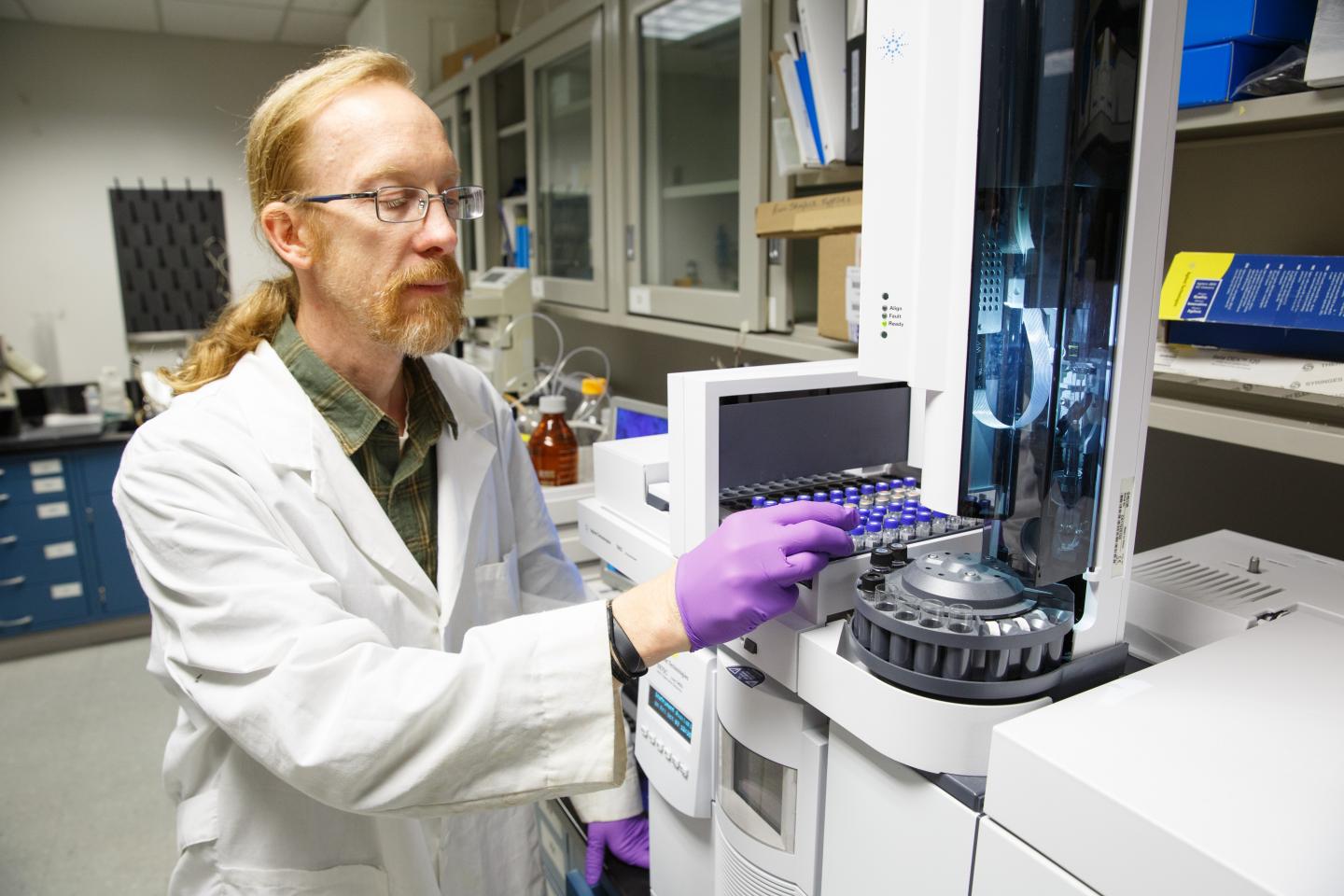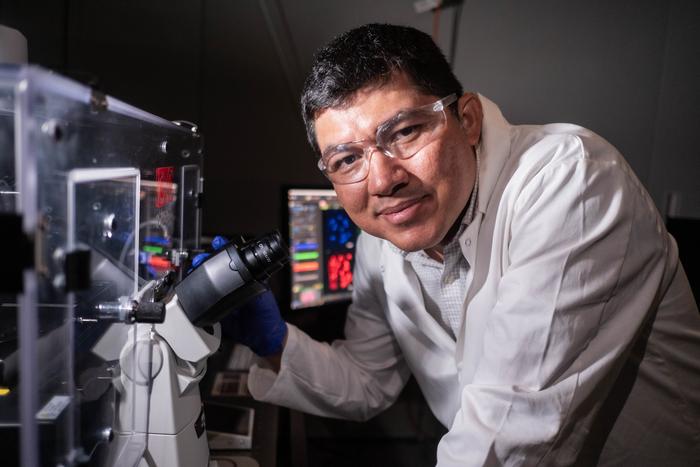
Credit: Whitney Walker, School of Science, Indiana University-Purdue University Indianapolis
INDIANAPOLIS — Plants — from the maple or the yew tree to the corn in roadside fields — produce countless kinds of compounds, also known as natural products, that the plants manufacture using the enzymes predetermined by their genetic code. Many of these natural products are very useful as antibiotics, anti-cancer drugs or vitamins, among myriad other applications. Many of these compounds are far too complex to synthesize in the laboratory, but they can be purified from the plants in which they are found.
A study published in Proceedings of the National Academy of Sciences focuses on triterpenes, a large group of plant natural products with a range of biological functions and potential uses in medicine (for example, as antimicrobials), industry (for example, as anti-foaming agents) and other fields, including a promising use as a natural sweetener significantly sweeter than sugar.
The study researchers report that changing the genetic code for one amino acid in a plant begins a process that alters the shape and function of an enzyme changing the folding of the chemical precursor, a technique that could be considered chemical origami, producing a new natural product with a variety of potential uses. Specifically, they changed an amino acid in the first enzyme in a pathway that produces a natural product that protects an oat plant from fungal pathogens, thus endowing disease resistance. In addition to the many varieties of oat plants, the knowledge they acquired is relevant to other crops.
Plants function as chemical manufacturing factories, and they can be altered to make specific chemical compounds, many of which can be useful in ways we do not yet understand. Altering how an enzyme folds the chemical precursor, resulting in a new compound, is analogous to changing the design or blueprint of a machine tool used in an automotive or refrigerator factory. The parts — the doors or widgets — that the tool manufactures will change as well.
"Changing or modifying plants is not a new concept. Humans have been successfully doing it for thousands of years," said study co-author Robert Minto, associate professor of chemistry and chemical biology in the School of Science at Indiana University-Purdue University Indianapolis. "In the PNAS study, we changed a single amino acid in (an enzyme from) the root tip of the oat plant to alter the function of a single enzyme. Being able to go in and do that directly is much more efficient than cross-breeding plants until you finally get the right version of the gene to produce the natural product you desire."
"A conserved amino acid residue critical for product and substrate specificity in plant triterpene synthases" is published in vol. 113, no. 30 of Proceedings of the National Academy of Sciences. Authors in addition to Minto are Melissa Salmon, Ramesha B. Thimmappa, Rachel E. Melton, Richard K. Hughes, Paul E. O'Maille, Andrew M. Hemmings and Anne Osbourn. The study was funded by European Union Grant KBBE-2013-7, the Biotechnology and Biological Sciences Research Council Institute Strategic Programme Grant Understanding and Exploiting Plant and Microbial Metabolism BB/J004561/1, the John Innes Foundation, and other sources.
The research was performed in the Osbourn lab at The John Innes Centre, Norwich Research Park in the U.K., where Minto spent a five-month sabbatical.
In his own lab at the School of Science at IUPUI, Minto focuses on a variety of natural products. Currently he and his undergraduate and graduate students are modifying fatty acids in yeast with the ultimate goal of identifying pathways to natural products with therapeutic and economic potential. In past work he identified how echinacea plants, widely used as herbal supplement to minimize cold symptoms, make natural products of industrial and agricultural significance.
"When we attempt biological engineering, we look to something — like yeast — that is easy to grow," Minto said. "Our goal is to identify compounds with medicinal, environmental and other uses that can be renewably produced in substantial amounts at a reasonable cost."
###
The School of Science at IUPUI is committed to excellence in teaching, research and service in the biological, physical, computational, behavioral and mathematical sciences. The school is dedicated to being a leading resource for interdisciplinary research and science education in support of Indiana's effort to expand and diversify its economy.
Media Contact
Cindy Fox Aisen
[email protected]
317-843-2275
http://science.iupui.edu/
############
Story Source: Materials provided by Scienmag






